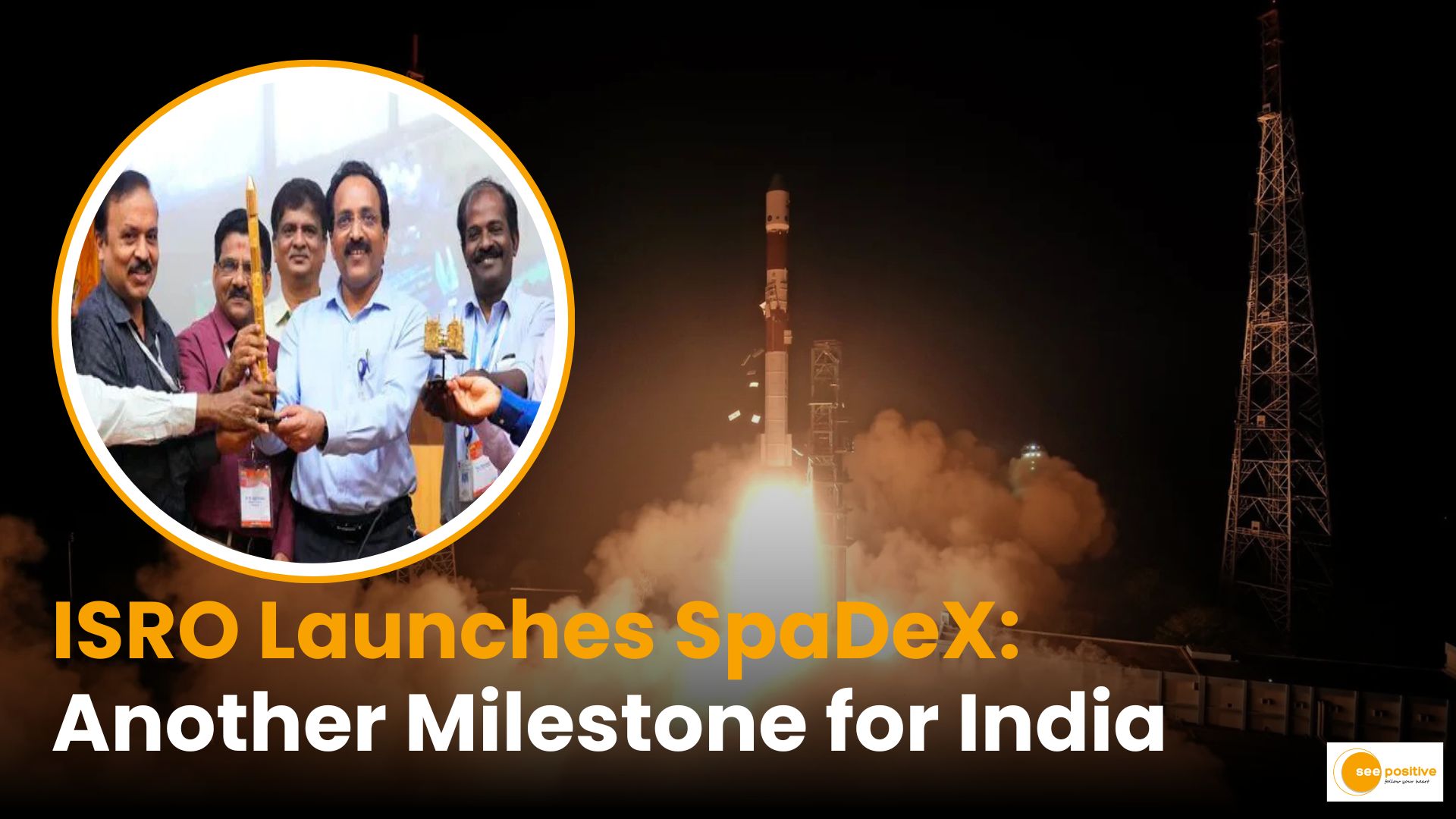The Indian Space Research Organisation (ISRO) has successfully launched SpaDeX (Space Docking Experiment) on 30th Dec. This being its final mission of the year, it was a successful launch done from the Satish Dhawan Space Centre (SDSC), in Sriharikota on December 30, 2024.
SpaDeX mission to ‘dock’ 2 satellites in space will enable docking technology to multi-launch missions and support future human spaceflight, in-space satellite servicing, and other proximity operations.
The mission consists of two satellites, “Chaser” and “Target,” which were launched on December 26, 2024, from the Satish Dhawan Space Centre aboard a Polar Satellite Launch Vehicle (PSLV).
The satellites will perform a controlled docking using four rendezvous and docking sensors, and the mission will also demonstrate electric power transfer between the two docked craft, composite spacecraft control, and undocking maneuvers ².
This experiment is a significant step towards India’s ambitious space programs, including the Gaganyaan human spaceflight mission and the construction of the Bharatiya Antariksha Station (BAS) space station ².
Know more about “docking”
“Dock” means to unite two moving satellites in space. It’s a challenging task and requires crucial manoeuvre. Spacecraft docking capability depends on space rendezvous, the ability of two spacecrafts to find each other.
Till date, its only mastered by a few countries – US, Russia, and China. ISRO is using an indigenous technology “Bharatiya Docking System”, for this mission.
How will ISRO dock the satellites?
SpaDeX will deploy two identical satellites, each weighing around 220 kilograms and will orbit 470 km above Earth. Satellites are SDX01 and SDX02, designated “Chaser” and “Target” respectively. It is a challenging task to dock two orbiting satellites. For this, careful manoeuvre the satellites needs to be sone that are orbiting at speeds of 28,800 km/hr. This is needed to reduce their relative velocities to a mere 0.036 km/hr, and eventually merge these to form a single unit in space.
What SpaDeX has for India?
SpaDeX is a breakthrough for the Indian Space Research Organisation (ISRO). Orbital docking, the process by which spacecraft can dock with each other in space, is an essential step for long-duration missions, crewed spaceflights, and future interplanetary exploration. It is significant because the docking, if successful, will pave the way for India’s future space missions such as Chandrayaan-4, Gaganyaan and India’s planned space station (Bharatiya Antriksh Station).
ISRO would significantly enhance its capabilities for deep space exploration, opening the door to more ambitious projects, including potential crewed missions to the Moon, Mars, and beyond. Furthermore, this achievement would solidify India’s position as a leading player in global space exploration, contributing to scientific advancements and international collaborations in space.
Historical Landmarks so far
- The first docking was successfully performed by US in 1966. It was under the command of Neil Armstrong on Gemini 8. This was achieved after multiple failures.
- The first annual piloted docking such system, Igla, was successfully tested in 1967, by the Soviet Union.
- China being the third country to master this crucial technology. In 2011, China’s first orbital docking occurred.
- India has become the fourth country to achieve space docking through its own indigenously developed “Bharatiya Docking System.”
Who said what?
Dr. Jitendra Singh, Minister of State (Independent Charge) of the Ministry of Earth Sciences stated “India has become the fourth country to join the select league of nations to achieve space docking, through its own indigenously developed ‘Bharatiya Docking System. Privileged to be associated with the Department of Space at a time when Team ISRO mesmerizes the world with global wonders, one after the other.”
ISRO Chairman S. Somanath confirmed that, the final docking is expected to occur around January 7, 2025. He added that “this mission is just one of many planned for the upcoming year. In 2025, we have many missions. To start with, we have the mission of GSLV launching the NVS-02 in the month of January,”
Andhra Pradesh Chief Minister Chandrababu Naidu said, “This success has propelled India closer to ambitious goals like Chandrayaan-4, Moon sample return, and the Bharatiya Antariksh Station.”


